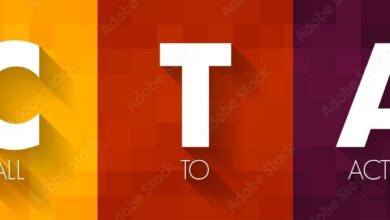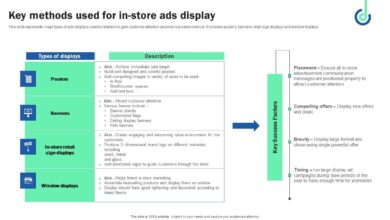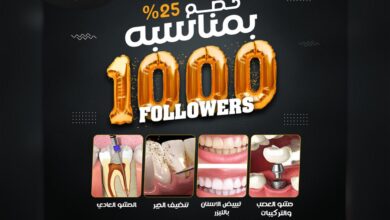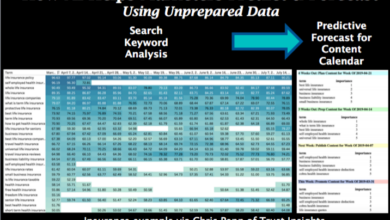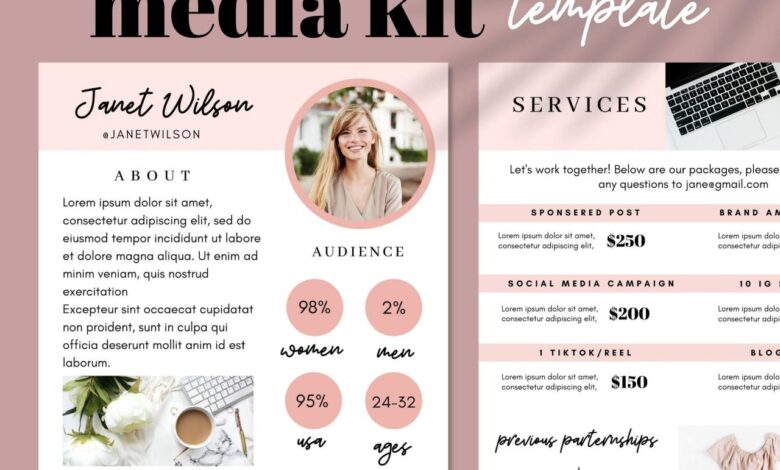
Media Kit Marketing Explained Your Guide
Media kit marketing explained is crucial for any business looking to attract partners, investors, or media attention. A well-crafted media kit acts as a powerful tool, showcasing your brand’s story, products, and team. From startups to established companies, understanding how to design, populate, and distribute a compelling media kit is essential for success in today’s competitive landscape. This comprehensive guide will walk you through the entire process, from concept to execution.
This guide will cover everything from crafting a compelling company overview to incorporating high-quality visuals. We’ll delve into effective content strategies, distribution methods, and strategies for measuring success. You’ll learn how to create a media kit that’s not just informative, but also visually appealing and effectively communicates your brand’s unique value proposition.
Introduction to Media Kit Marketing
A media kit is a crucial marketing tool for businesses, startups, and non-profits. It serves as a comprehensive resource that showcases essential information about your organization, its mission, and accomplishments. Essentially, it’s a concise, attractive summary designed to pique the interest of potential partners, investors, and media outlets. A well-crafted media kit can significantly enhance your chances of securing valuable collaborations and positive media coverage.A well-structured media kit presents a compelling narrative about your organization.
It is a powerful means of attracting the attention of those seeking to partner with or learn more about your venture. By showcasing key information, achievements, and opportunities, it acts as a persuasive tool in the marketing arsenal.
Core Concept and Purpose
A media kit is a compilation of materials that highlight your organization’s story, achievements, and key information. It acts as a concise and easily digestible summary for potential partners, investors, and media. It provides a snapshot of your organization’s value proposition, making it easier for external stakeholders to understand your mission and goals. It is more than just a brochure; it’s a targeted communication tool designed to generate interest and foster connections.
Types of Media Kits
Different types of organizations utilize media kits for various purposes. Startups often use them to attract seed funding or angel investors, while established businesses leverage them for partnership opportunities. Non-profit organizations may use media kits to solicit donations or garner media attention for their initiatives.
- Startups: Startups often include information about their founding team, mission, product or service, market analysis, and financial projections. The goal is to showcase potential, growth, and the team’s expertise.
- Established Businesses: These kits focus on the company’s history, key achievements, market presence, brand values, and recent news. Emphasis is placed on the company’s track record and impact.
- Non-profits: Non-profit media kits emphasize the organization’s mission, impact, programs, and financial data. They focus on the social good being accomplished and how the organization is making a difference.
Essential Elements, Media kit marketing explained
A comprehensive media kit usually includes several key components.
- Company Overview: This section provides a concise description of your organization, its mission, and values. It Artikels the key problems you solve and the benefits you offer.
- Team Information: Introduce the key individuals behind the organization. Include their roles, relevant experience, and qualifications. This builds trust and demonstrates the expertise behind the venture.
- Products/Services: Detailed descriptions of your offerings, highlighting their unique features and benefits. Visual aids like high-quality images or short videos can further enhance understanding.
- Financial Highlights (if applicable): Key financial data, including revenue figures, funding rounds, or projected growth. These can be crucial for investors.
- Press Releases and Media Coverage: Showcase previous positive media coverage and press releases. This demonstrates your organization’s visibility and reputation.
- Contact Information: Include clear contact details for inquiries, ensuring easy communication.
Benefits of Using a Media Kit
Media kits offer numerous advantages in marketing strategies.
- Increased Credibility: A well-designed media kit builds trust and credibility with potential partners, investors, and media outlets.
- Enhanced Communication: It streamlines communication by providing a centralized source of information, saving time and effort for all involved.
- Improved Outreach Effectiveness: A media kit significantly improves outreach by making it easy for external stakeholders to understand your organization.
- Facilitated Partnerships: It facilitates the process of forming partnerships by clearly outlining your organization’s value proposition and potential for collaboration.
- Attracting Investors: For startups, a well-presented media kit can attract investors by showcasing the organization’s potential for growth and profitability.
Designing an Effective Media Kit
A media kit is your company’s passport to the media world. It’s a concise, visually appealing document that showcases your brand, products, and accomplishments. A well-designed media kit makes it easy for journalists, bloggers, and influencers to understand your story and potentially feature your company. This section delves into crafting a media kit that truly shines.Crafting a media kit is about more than just presenting facts; it’s about telling a compelling story.
By strategically using visuals, concise language, and a consistent brand voice, you can create a media kit that captures attention and leaves a lasting impression. This will greatly enhance the chances of media outlets taking note of your business.
Media Kit Template
A well-structured template is crucial for a media kit. A template provides a framework for consistency and ensures key information is easily accessible. This template ensures clarity and allows media representatives to quickly understand your offerings.
So, you’re diving into media kit marketing? Understanding your target audience is key, and that often involves knowing the best ways to reach them. Knowing the optimal Instagram Reel length for maximum engagement is crucial for your strategy. Check out this article on the best Instagram reel length for max engagement to ensure your reels are grabbing attention.
Ultimately, a well-crafted media kit, combined with engaging video content, is the perfect recipe for boosting your brand visibility.
- Company Overview: Begin with a brief, compelling overview of your company. Include your mission, vision, and core values. Showcase your company’s unique selling proposition. Highlight what makes your company stand out from the competition.
- Products/Services: Detail your offerings. Use clear and concise language, emphasizing the benefits of each product or service. Include high-quality images or graphics to visually represent each offering.
- Team: Introduce your key personnel. Include their roles, brief bios, and relevant qualifications. A team section allows the media to understand the expertise behind your company.
- Testimonials and Client Stories: Showcase positive feedback from satisfied clients. Quotes and short success stories are more effective than generic statements. Testimonials build trust and demonstrate the impact of your products or services.
- Recent News and Achievements: Highlight recent press releases, awards, partnerships, and significant milestones. This section showcases your company’s momentum and current activity.
Responsive HTML Table Structure
A responsive design is essential for a media kit. It ensures the layout adapts to different screen sizes, from desktop computers to mobile phones. This adaptability enhances the viewing experience for a wider audience.
| Company Overview | Products/Services | Team | Testimonials |
|---|---|---|---|
| Brief description of your company, including mission and vision. | Images and descriptions of your key products or services. | Headshots and brief bios of key team members. | Client quotes or success stories. |
High-Quality Images and Graphics
Visuals are paramount in a media kit. High-resolution images and graphics that are relevant and visually engaging are essential. Images are vital to illustrating your company and products.Use professional photography or illustrations to showcase your brand and products. Consider using infographics to present complex data or statistics in a visually appealing manner. Ensure all images and graphics align with your brand identity.
Testimonials and Client Stories
Client testimonials and stories are crucial for building credibility and demonstrating your company’s impact. They add authenticity and trust to your media kit.
- Format: Present testimonials in a structured format, such as a quote box with a client photo or a brief case study. Use a clear and concise structure for easy readability.
- Client Profiles: Include a brief description of the client to provide context.
- Visual Appeal: Use a visually appealing format to showcase testimonials and client stories.
Branding Consistency
Maintain brand consistency throughout your media kit. This includes your logo, color scheme, fonts, and overall design aesthetic. A consistent brand identity creates a unified and memorable experience.A consistent brand identity fosters recognition and builds trust among your target audience. Maintaining consistency throughout your media kit reinforces your brand message and ensures a seamless user experience.
Content Strategy for a Media Kit
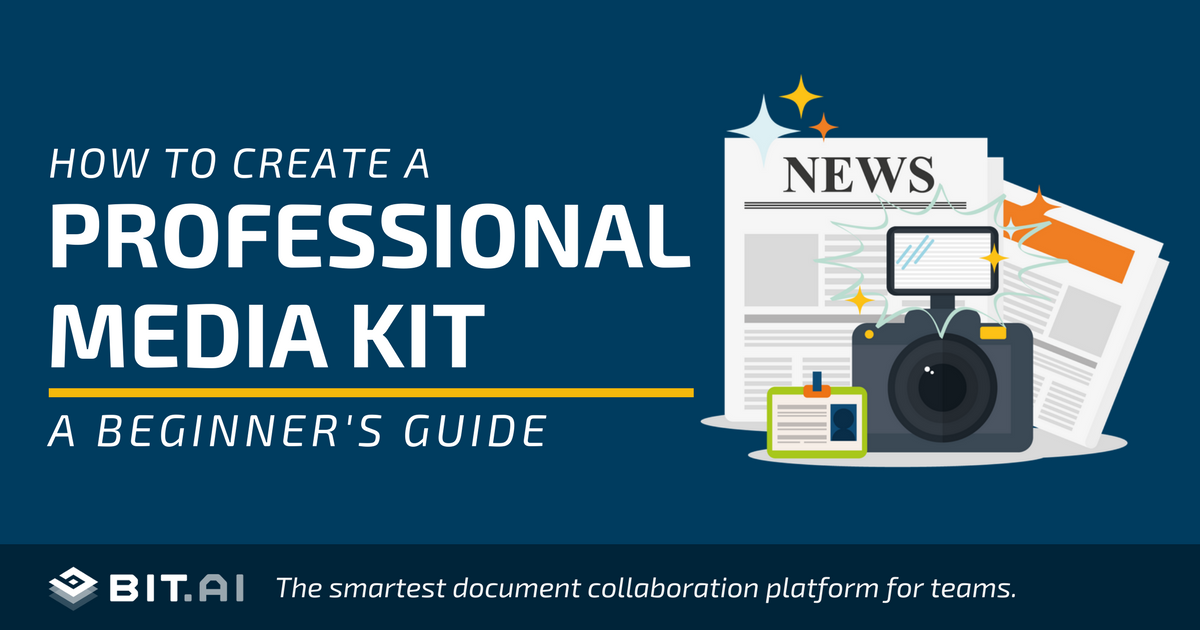
A compelling media kit isn’t just a collection of facts; it’s a strategic narrative designed to captivate potential partners and media outlets. Crafting a media kit requires careful consideration of your target audience and the specific messages you want to convey. This phase of development goes beyond simply listing accomplishments; it’s about weaving a story that resonates with your intended recipients.Effective media kits aren’t one-size-fits-all.
They need to be tailored to the specific interests and needs of the individuals or publications you’re targeting. Understanding your audience’s perspective and tailoring the information accordingly will significantly improve your outreach and engagement.
Key Messages
Identifying and highlighting key messages is crucial for capturing attention and conveying your brand’s essence. These messages should reflect your unique value proposition and resonate with the target audience’s interests. Consider what sets your organization apart and how your services or products address their needs. For instance, if you’re a tech startup, highlight your innovative solutions and market-disrupting potential.
If you’re a non-profit, emphasize the impact you’ve made and the challenges you’re addressing.
Tailoring Content to the Target Audience
Media kits should be tailored to the specific interests and needs of the target audience. This means understanding the publications, journalists, or influencers you’re trying to reach and adapting the content accordingly. For example, a media kit aimed at a tech publication will focus on technical details, innovation, and market trends, while a kit targeting a lifestyle magazine might emphasize the human element, the emotional impact, and the broader social implications of your work.
This personalized approach enhances the likelihood of engagement.
Writing Styles
Different sections of the media kit require distinct writing styles. The executive summary should be concise and impactful, highlighting key achievements and offering a quick overview of your organization. The company description should be informative, providing a detailed background of your business, mission, and values. Press releases, on the other hand, should be newsworthy, emphasizing the most recent events and developments.
Use clear, direct language in each section, tailoring the tone to match the expected audience.
Highlighting Statistics and Achievements
Quantifiable data and impressive accomplishments are powerful tools for showcasing your organization’s impact and success. Present key statistics and achievements in a clear, concise manner, using charts, graphs, or tables where appropriate. Instead of simply stating figures, use them to illustrate a narrative about your growth, achievements, and impact. For example, instead of just saying “10,000 downloads,” you could say, “Our mobile app achieved 10,000 downloads in the first quarter, demonstrating strong user engagement and a rapidly growing user base.”
Maintaining a Consistent Brand Voice
A consistent brand voice throughout the media kit reinforces your brand identity and makes a lasting impression. This includes maintaining a cohesive tone and style in all sections. Consistency in language, imagery, and overall presentation ensures that your media kit accurately reflects your brand values and personality. This approach creates a memorable and professional image for your organization, leaving a lasting impact on potential partners.
Understanding media kit marketing is crucial for boosting brand visibility. It’s all about showcasing your company’s strengths and accomplishments, but it’s also essential to understand how Google Search Console marketing can help optimize your online presence. For a deeper dive into optimizing your search visibility, check out this helpful guide on google search console marketing explained.
Ultimately, a well-crafted media kit, combined with a strategic approach to search engine optimization, can significantly enhance your brand’s overall marketing efforts.
Distribution and Promotion Strategies
A well-designed media kit is useless without a robust distribution strategy. It’s crucial to reach the right audience and generate interest in your company, products, or services. This involves careful planning and execution, ensuring your message resonates with potential partners and media outlets.Effective distribution strategies not only get your media kit in front of the right people but also create opportunities for engagement and follow-up.
A strong distribution strategy builds relationships, fosters media coverage, and ultimately leads to successful partnerships.
Methods for Distributing the Media Kit
Distributing your media kit effectively requires a multi-faceted approach, targeting various channels to maximize visibility and engagement. The chosen method should align with your target audience’s preferences and the nature of your company.
- Website Integration: A dedicated media kit page on your website serves as a central hub for potential partners. This allows easy access and download for anyone interested. Ensure the media kit is prominently featured and easy to find.
- Email Marketing: Targeted email campaigns are vital for reaching specific journalists, bloggers, or influencers. Segment your audience based on their interests and tailor your email subject lines and content accordingly for optimal engagement.
- Online Portfolios and Platforms: Leveraging platforms like PR Newswire, or industry-specific online portfolios, allows you to reach a wider network of potential media contacts. These platforms often have built-in distribution capabilities and can broaden your reach.
- Direct Outreach: Directly contacting relevant media outlets and potential partners through personalized emails or phone calls can yield significant results. This approach allows for tailored communication and builds relationships with key individuals.
Examples of Distribution Platforms
Various platforms provide channels for distributing your media kit, catering to different target audiences and communication styles.
| Platform | Description | Target Audience |
|---|---|---|
| Your Company Website | A dedicated page or section specifically for the media kit. | Broad, including potential partners and journalists. |
| Email Marketing Platforms (e.g., Mailchimp) | Targeted email campaigns to specific journalists or influencers. | Specific journalists, bloggers, or influencers. |
| Online Portfolios (e.g., Behance, Dribbble) | Visual-heavy media kits work well on these platforms for creative industries. | Creative professionals, designers, artists, and similar. |
| PR Newswire or similar services | Wide distribution channels to media outlets and journalists. | Broader reach to a wider audience of journalists and media outlets. |
Measuring Distribution Success
Tracking the success of your media kit distribution efforts is crucial for continuous improvement. Key metrics help evaluate effectiveness and refine your approach.
- Download Counts: Monitor the number of media kits downloaded. This provides a basic understanding of interest and engagement.
- Media Coverage: Track how often your company or product is featured in news articles, blogs, or other media. Analyze the tone and impact of the coverage.
- Website Traffic: Monitor the website traffic to your media kit page to gauge interest and engagement.
- Lead Generation: Assess the number of inquiries, partnerships, or collaborations that result from media kit distribution.
Engaging with Media Outlets and Partners
After distributing your media kit, nurturing relationships is essential for long-term success. This involves proactive engagement and follow-up.
- Follow Up: Send personalized thank-you notes or follow-up emails to acknowledge receipt and express continued interest in a potential partnership. Tailor these messages to specific media outlets or partners.
- Offer Exclusive Content: Consider providing exclusive content, such as behind-the-scenes access or early previews, to further build rapport and show your commitment to the relationship.
- Networking: Attend industry events or conferences to meet journalists and potential partners in person and foster relationships beyond initial contact.
Updating the Media Kit
A dynamic media kit is crucial for maintaining relevance. A regularly updated media kit reflects your company’s growth and evolution.
- Establish a Review Schedule: Schedule regular reviews, perhaps quarterly, to ensure the information remains current and accurate.
- Gather Updated Information: Continuously collect new information, company achievements, or key statistics for inclusion in the media kit.
- Refine Content: Refine the content based on feedback or evolving needs.
Case Studies and Examples
Media kits are more than just a collection of facts; they’re powerful marketing tools that can effectively communicate a brand’s story and value proposition to potential partners, investors, or media outlets. Understanding successful case studies provides invaluable insights into crafting compelling and impactful media kits. Learning from others’ successes allows you to identify key elements that resonate with the target audience and tailor your own kit for maximum impact.
Successful Media Kit Examples Across Industries
Media kits, when designed effectively, can become a cornerstone of a successful marketing strategy. Examining successful examples across various industries highlights commonalities and best practices that can be applied to any business.
Key Elements Contributing to Media Kit Success
Several key elements consistently appear in successful media kit designs. These elements often include a compelling brand narrative, clear and concise messaging, visually appealing design, and easy navigation. Quantifiable achievements and data-driven insights also strengthen the impact of the media kit, providing tangible proof of success and value.
Real-World Scenarios of Media Kit Effectiveness
Media kits have proven instrumental in achieving diverse marketing goals. For example, a tech startup used a meticulously crafted media kit to attract venture capital, highlighting key performance indicators and future projections. Similarly, a non-profit organization leveraged a media kit to secure media coverage and build public awareness, showcasing their impact and community engagement efforts.
Table Demonstrating Key Features of Various Media Kit Examples
| Company | Industry | Key Focus/Value Proposition | Distinguishing Features ||—|—|—|—|| Patagonia | Outdoor Apparel | Sustainability and ethical practices | Emphasis on environmental impact, clear mission statement, and engaging storytelling || Microsoft | Technology | Innovation and technological advancement | Detailed data on market share, user base, and technological breakthroughs, showcasing a strong presence in the market || World Wildlife Fund (WWF) | Environmental conservation | Protecting biodiversity and combating climate change | Impactful visuals, statistics on conservation efforts, and clear calls to action for supporting their mission || Nike | Sportswear | Performance and athleticism | Focus on athletic achievements, athlete endorsements, and a visually appealing design reflecting a powerful brand |
Highlighting Company Values within a Media Kit
Integrating company values into a media kit creates a more holistic and genuine representation of the brand. This can be achieved in various ways. For instance, the company mission statement can be prominently featured, or values can be woven into the narrative and visual elements. Employee testimonials or stories can also effectively showcase the company’s values and culture.
Furthermore, highlighting initiatives related to the company’s values can create a stronger emotional connection with potential partners or investors. A consistent visual theme throughout the media kit can also reinforce the company’s brand identity and values.
Key Considerations for a Media Kit: Media Kit Marketing Explained
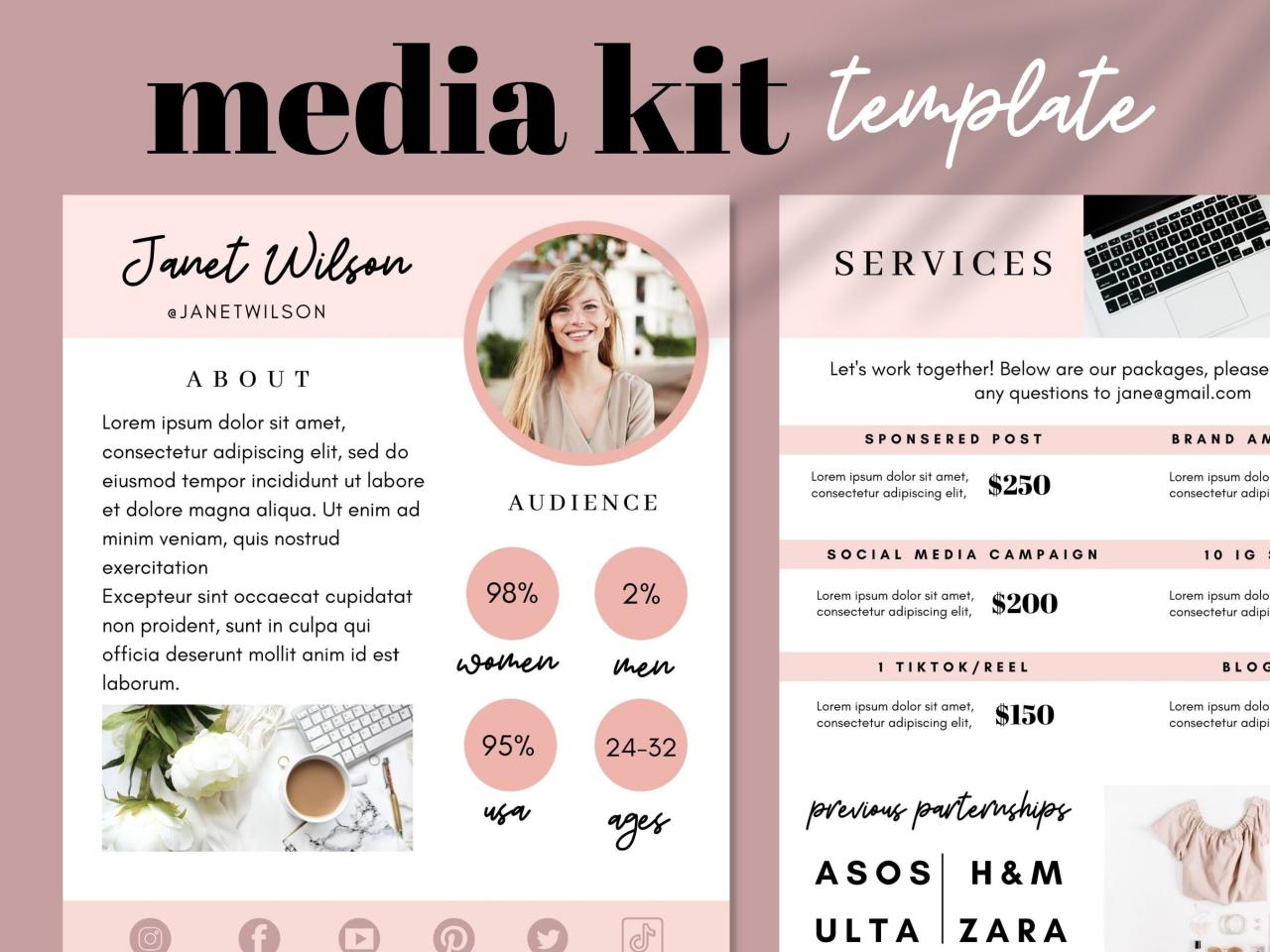
A media kit is more than just a collection of information; it’s a strategic tool to showcase your brand or organization to potential media outlets. A well-crafted media kit can significantly enhance your chances of securing positive media coverage and building relationships with journalists. This section delves into crucial aspects to ensure your media kit is effective and impactful.Creating a compelling media kit involves careful consideration of several key elements.
From accuracy and visual appeal to clear calls to action and avoiding common pitfalls, each component plays a vital role in the kit’s overall effectiveness.
Accuracy and Up-to-Date Information
Accurate and current information is paramount in a media kit. Inaccurate details can damage credibility and trust, potentially jeopardizing future media opportunities. Ensure all figures, statistics, and contact information are precise and up-to-date. Regularly review and update the media kit to reflect any changes in your organization or industry trends. This proactive approach demonstrates professionalism and keeps the information reliable for journalists.
Understanding media kit marketing is crucial for any business looking to boost visibility. It’s all about showcasing your brand’s strengths and accomplishments concisely, and for that, you need a solid plan. Leveraging the services of top social media management agencies like the ones detailed in this helpful guide, 12 top social media management agencies services for impact , can significantly amplify your reach and impact.
Ultimately, a well-crafted media kit will attract more potential clients and partners, thus solidifying your brand’s reputation.
Visual Appeal and Design
A visually appealing media kit is crucial for grabbing attention and conveying professionalism. The design should be consistent with your brand identity, creating a cohesive and memorable experience for the recipient. Consider using high-quality images, graphics, and a clean, easy-to-navigate layout. The visual presentation enhances the overall message and strengthens the impact of the content.
Clear Call to Action
A media kit should not just provide information; it should inspire action. A clear call to action guides journalists on the next steps, whether it’s requesting more information, scheduling an interview, or accessing additional resources. This explicit direction streamlines the process for potential media partners. Include a dedicated section outlining the desired outcome, such as media coverage or interview requests.
Potential Pitfalls to Avoid
Several pitfalls can undermine the effectiveness of a media kit. Avoid overwhelming journalists with excessive information or jargon. Ensure the tone and language are professional and suitable for a media audience. Proofread thoroughly for grammatical errors and typos, as these can detract from the overall impression. Maintain consistency in branding elements throughout the kit.
Also, ensure that the information presented aligns with your organization’s mission and values.
Media Kit Review Checklist
Before distributing your media kit, a comprehensive review is essential. This process guarantees accuracy and completeness, ensuring a positive first impression. A well-structured checklist streamlines the review process and helps catch any potential errors.
- Accuracy Verification: Double-check all facts, figures, and contact information to ensure accuracy and currency.
- Visual Consistency: Confirm visual elements align with your brand identity and are visually appealing.
- Clarity and Conciseness: Assess the clarity and conciseness of the messaging, ensuring the language is appropriate for the target audience.
- Call to Action Effectiveness: Verify the call to action is clear, concise, and guides the recipient to the desired outcome.
- Grammar and Spelling Review: Thoroughly proofread the entire media kit for any grammatical errors or typos.
- Accessibility Assessment: Ensure the media kit is accessible to all recipients, adhering to accessibility guidelines.
Advanced Techniques
Elevating your media kit from a static document to a dynamic resource requires a multifaceted approach. Advanced techniques focus on interactive elements, personalized experiences, and adaptability to enhance engagement and effectiveness. These strategies go beyond the basics, transforming your media kit into a powerful tool for attracting and impressing potential partners and collaborators.
Interactive Elements
Interactive elements breathe life into a media kit, transforming it from a passive document to an engaging experience. Videos, for example, can showcase your company culture, highlight key projects, or feature testimonials from satisfied clients. Infographics provide a visually compelling way to present complex data or key statistics, making them easily digestible and memorable. Including interactive maps, allowing users to zoom in on specific regions or projects, can be particularly effective in showcasing global reach or geographic focus.
These interactive elements enhance understanding and leave a lasting impression.
Personalization
Tailoring your media kit to specific target audiences is crucial. Different audiences have varying needs and expectations. A media kit for a venture capitalist will differ significantly from one for a journalist covering local news. Recognizing these distinctions and adapting your content, visuals, and tone accordingly is essential. This might involve highlighting different statistics, emphasizing different success stories, or adjusting the language to resonate with the specific audience’s interests and vocabulary.
Personalization increases the likelihood of connecting with the intended audience.
Responsive Design
Ensuring your media kit adapts seamlessly to different devices is paramount in today’s digital landscape. A media kit that doesn’t function optimally on smartphones or tablets loses significant potential. Responsive design ensures the content remains readable and visually appealing regardless of the screen size. This adaptability enhances accessibility and user experience, as it adapts to various screen sizes.
This is critical, as users are likely to access media kits on a range of devices, from desktop computers to mobile phones.
Data Visualizations
Data visualization is an effective tool to present quantitative data in a clear and engaging manner. Instead of simply listing numbers, use charts, graphs, and other visual aids to highlight key trends and patterns. For example, a bar chart can visually represent the growth of your user base over time. Line graphs can effectively display revenue figures.
These visualizations help to communicate complex data effectively, making it more digestible and persuasive.
A/B Testing
A/B testing different media kit designs is a crucial step in optimizing its effectiveness. This process involves creating two or more versions of your media kit, varying elements such as layout, imagery, or calls to action. Testing these versions against each other allows you to determine which design performs best in attracting engagement and achieving your objectives. For example, you might test different headlines or call-to-action buttons to see which version leads to more downloads or inquiries.
This iterative approach ensures you are using the most effective design possible.
Last Word
In conclusion, mastering media kit marketing explained empowers businesses to effectively communicate their value proposition to key stakeholders. By following the strategies Artikeld in this guide, you can create a media kit that not only showcases your brand but also acts as a powerful tool for attracting partners, investors, and media coverage. Remember, a well-designed media kit is more than just a document; it’s a strategic marketing asset that can significantly impact your business’s growth.
